American Oystercatchers
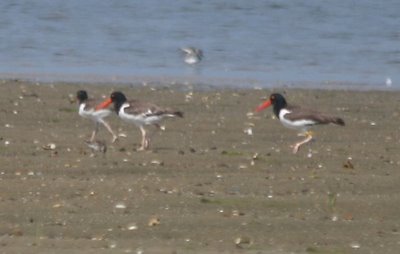
I consider American oystercatchers to be something of a miracle. Decimated by market shorebird hunting by the mid-1800's, the species has rebounded. They're big, hearty birds, the size of a bantam, the female bigger and heavier than the male, oddly enough. They were rare nesters in Connecticut--on the order of a handful of pairs--when I lived there in the late '80's and early 90's, but now they are the most common breeding shorebird on Long Island. Which, when I think about it, isn't saying all that much, because what's the other choice? Piping plover?? Willet? Anyway, they're more common than they used to be, that's for sure, and that's cause for celebration. They nest right on the ground in a shell-fragment lined scrape, and they defend their nests with piercing whistles and dramatic distraction displays. I was thrilled to see a pair with their yet-to-be fledged youngster striding along South Beach. Yes, he can fly, so he's technically a fledgling, but he's not going anywhere just yet.
American oystercatchers have an extremely long juvenile dependency period--fully 60 days of following their parents around, begging for food. Well, no wonder: opening oysters (or prying limpets off rocks, or cutting the adductor muscle of a bivalve) is no picnic, and not for beginners. Baby oystercatchers must learn their trade at the wrinkly pink feet of the masters--their parents.
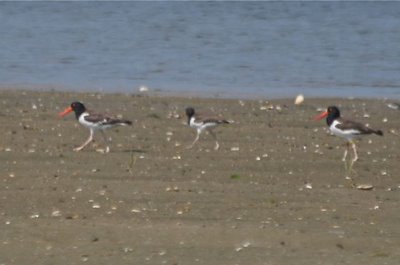
So this gangly youngun, all pink stockings and oversized body, was peeping after his providers on the sunny flats. He's the one in the middle, with the underdeveloped bill.
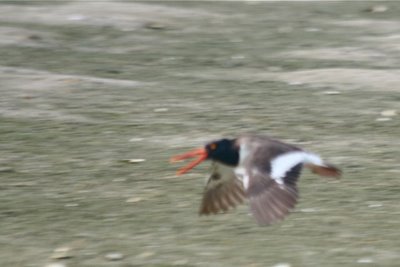
Oystercatchers always have a comment on something--they pipe and whistle whenever they move.
And they move me when they fly, all flashes of white, black and blazing orange.
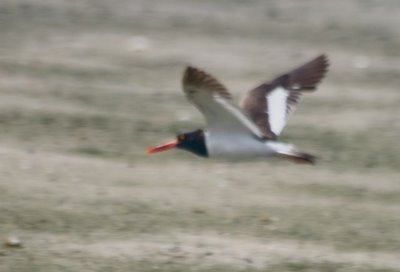
blurry photos are better than no photos blurry photos are better than no photos blurry photos
In case you missed it, I had the image stabilizing motor on my telephoto lens switched off all that golden day on South Beach...which is causing me great embarrassment.
As a partial antidote, I offer one of my drawings, of a still-downy oystercatcher watching closely as its parent chisels away at a limpet.
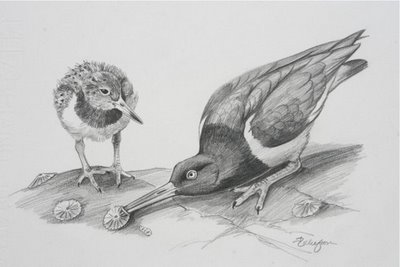 This is among my favorite drawings, because it captures the sweetness of a young bird without being treacly.
This is among my favorite drawings, because it captures the sweetness of a young bird without being treacly.It was done for the Birds of North America series. I drew birds for the print edition for the ten years it was in production, and they're now all online, too, thanks to the Lab of Ornithology. It's hard to draw baby birds well. There are very few drawings or paintings of them, in my opinion, that are true representations. Lars Jonsson does an amazing job with them, as does Al Gilbert. You have to sort of get inside them to draw them, and study what it is that gives them their special look. It helps to have one right in front of you.
Labels: American oystercatchers






<< Home